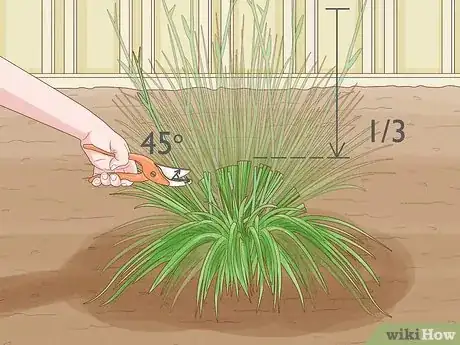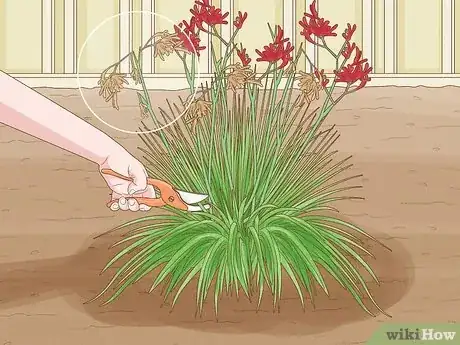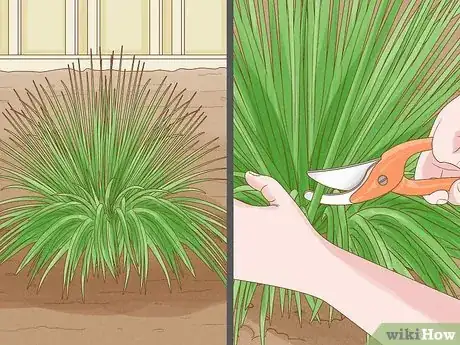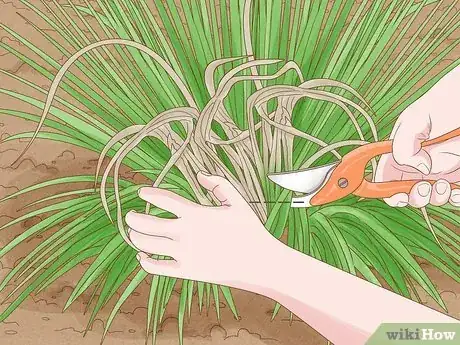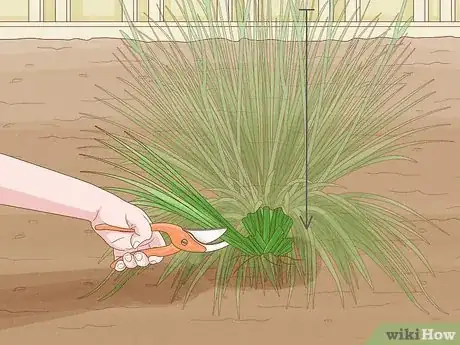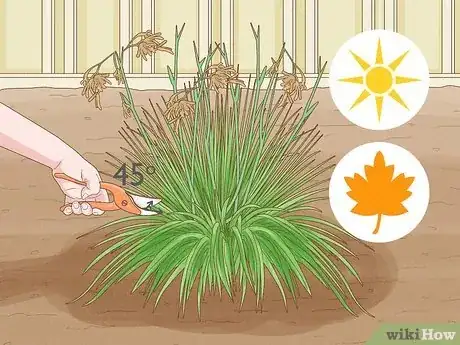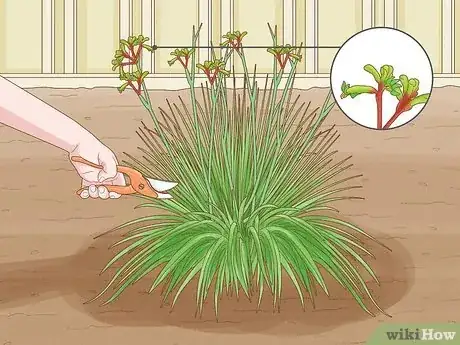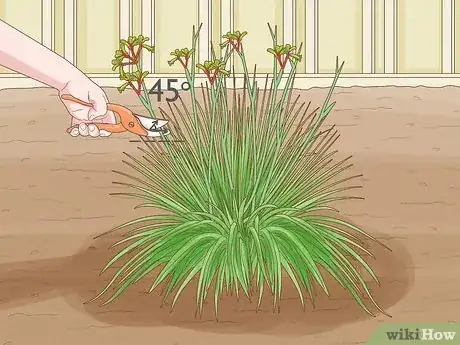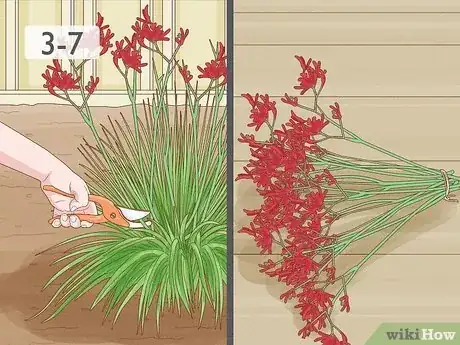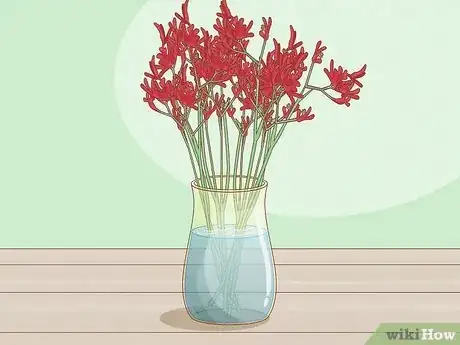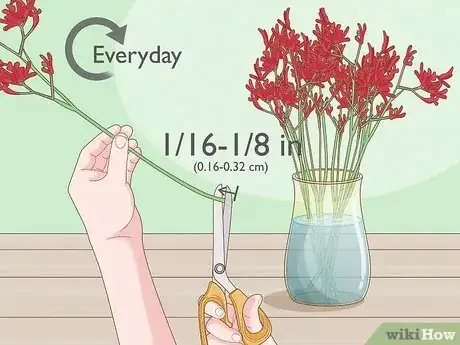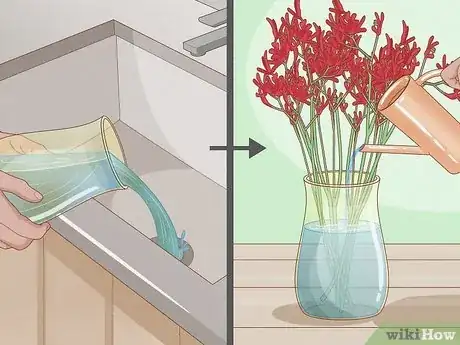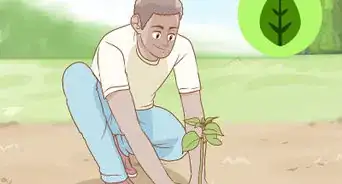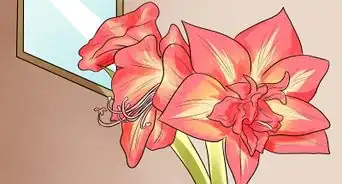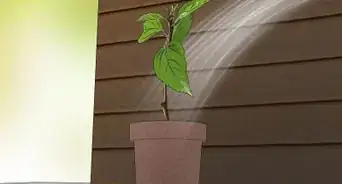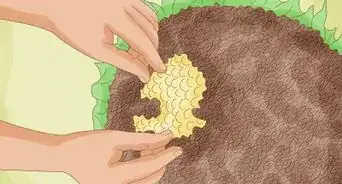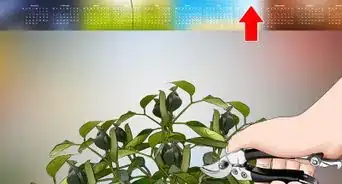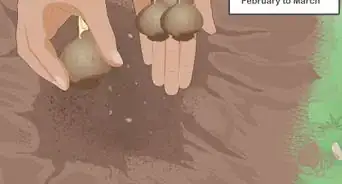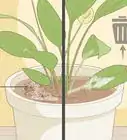This article was co-authored by Maggie Moran. Maggie Moran is a Professional Gardener in Pennsylvania.
There are 13 references cited in this article, which can be found at the bottom of the page.
This article has been viewed 53,807 times.
Kangaroo paws are an eye-catching plant native to Australia. They are known for their sword-shaped leaves and fuzzy, colorful flowers. They grow the healthiest in hardiness zones 9-11. You can prune both potted kangaroo plants and plants established in your garden. In addition, you can snip your flowers halfway down the stem if you want to display your kangaroo paws in a vase. With a little maintenance and care, your kangaroo paws will make great additions to your garden or tabletop!
Steps
Pruning after the Plant Flowers
-
1Cut back the plant by one third after it finishes flowering. Typically, the best time to do this is at the end of summer or in early autumn, based on when your plant stops flowering. Use pruning shears or loppers to remove about one third of your plant's total mass. This encourages the plant to grow new buds, so it can bloom beautifully the following season. Make your cuts at a 45-degree angle to minimally damage the plant.[1]
- If your plant is very small or does not grow quickly, it only requires a light pruning. You can snip around one fourth of the plant off rather than one third.
-
2Cut damaged flower stems to the ground for a thorough pruning. In addition to reducing the overall size of your plant, go around the plant and look for any browning areas or withered stems. Snip these stems off using your pruning shears, and make your cut at a 45-degree angle as close to the ground as you can. This way, your plant will grow fresh, healthy stems.[2]
- If you leave unhealthy stems, they will drain your plant's nutrients. To keep your plant healthy, it is best to get rid of any unsightly stems.
- Avoid cutting green shoots. These are alive and can still grow healthy buds.
Advertisement -
3Trim back the leafy foliage to open up the middle of your plant. If the middle of your kangaroo paw is very dense and congested, snip off some of the leaves using your pruning shears. Cut the leaves at the base of the plant at a slight angle.[3]
- Keeping the center open and airy helps the plant grow long stems and project outward.
-
4Remove discolored tips from the end of the remaining leaves. After you've pruned your kangaroo paw, go around the plant and snip off any brown or yellow ends. This ensures the plant conserves its nutrients so it can grow gorgeous flowers.[4]
- Make your snips with pruning shears or scissors.
-
5Cut the plant's stems completely to the ground to rejuvenate your plant. If your plant is extremely overgrown or not looking healthy, you can revitalize it by pruning it to the ground. Use pruning shears or a hedge clipper to cut off the stems of the plant as close to the ground as you can. This sends the plant into dormancy through the colder season. As it starts to get warm, the plant grows new, healthy stems.[5]
- This is a good idea if your kangaroo paw has overgrown your garden bed or if the plant looks withered and sickly.
- If your kangaroo paws are in a pot rather than your garden, it is healthier for the plant to leave a few healthy stems if you can. That way, it can grow back faster.
-
6Prune selectively through the summer and fall when your flowers fade. As you notice your flowers losing color or wilting, cut them off at the base of the plant. Make your snip at a 45-degree angle, and the stem will grow back healthy next year.[6]
- This way, your plant looks great in your garden or inside its pot.
Trimming Kangaroo Paws for Display
-
1Cut your kangaroo paws when the first flower opens. Kangaroo paws have many flowering buds lining the stems. If you want to display your flowers in a vase or bouquet, snip your stems when you see the first bud open into a flower.[7]
- This way, you can get the maximum display time for your flowers.
-
2Make your cut about halfway down the stem. If you cut the stem about half way, the flower buds continue to develop where you made the cut. This promotes new growth quicker, so you'll have even more beautiful flowering stems. To cut, use pruning shears and snip the stem at a 45-degree angle.[8]
-
3Cut 3-7 kangaroo paw stems to make a full bouquet. If you want to make a gorgeous floral display, use a few kangaroo paw stems and a decorative vase. In addition, you can add other green accents or additional flowers to your bouquet.[9]
- This creates an attractive centerpiece, for example. You can place the centerpiece in your office, bathroom, living room, or kitchen.
-
4Put your kangaroo paws in a decorative vase full of water. Fill up a vase of your choosing about ⅔ full with cool water, and then place your kangaroo paws inside. Make sure each of your stems is submerged at the bottom.[10]
-
5Cut the tips of the stems every day or every other day. Your cut flowers absorb water from the bottom of the stem. To keep the flower healthy, take them out of the vase, place them on a paper towel, and cut the end of the plant at an angle. Remove about 1⁄16–1⁄8 in (0.16–0.32 cm) of the stem.[11]
- This extends the vase life of your kangaroo paws.
- Cut your stems under flowing water. This will help prevent air from getting drawn up into the stem and allow the stems to absorb water more easily.
-
6Change the water in your vase when you snip the stems. Before you snip your stems, pour out the water and fill up your vase about two thirds of the way full with fresh water. If there are any leaves in the vase, take them out and throw them away.[12]
- With proper watering, your kangaroo paws should last in a vase for 3-5 days.
Expert Q&A
Did you know you can get expert answers for this article?
Unlock expert answers by supporting wikiHow
-
QuestionDo kangaroo paws need full sun?
 Lauren KurtzLauren Kurtz is a Naturalist and Horticultural Specialist. Lauren has worked for Aurora, Colorado managing the Water-Wise Garden at Aurora Municipal Center for the Water Conservation Department. She earned a BA in Environmental and Sustainability Studies from Western Michigan University in 2014.
Lauren KurtzLauren Kurtz is a Naturalist and Horticultural Specialist. Lauren has worked for Aurora, Colorado managing the Water-Wise Garden at Aurora Municipal Center for the Water Conservation Department. She earned a BA in Environmental and Sustainability Studies from Western Michigan University in 2014.
Professional Gardener
-
QuestionHow tall do kangaroo paws grow?
 Lauren KurtzLauren Kurtz is a Naturalist and Horticultural Specialist. Lauren has worked for Aurora, Colorado managing the Water-Wise Garden at Aurora Municipal Center for the Water Conservation Department. She earned a BA in Environmental and Sustainability Studies from Western Michigan University in 2014.
Lauren KurtzLauren Kurtz is a Naturalist and Horticultural Specialist. Lauren has worked for Aurora, Colorado managing the Water-Wise Garden at Aurora Municipal Center for the Water Conservation Department. She earned a BA in Environmental and Sustainability Studies from Western Michigan University in 2014.
Professional Gardener
-
QuestionAre kangaroo paws poisonous?
 Lauren KurtzLauren Kurtz is a Naturalist and Horticultural Specialist. Lauren has worked for Aurora, Colorado managing the Water-Wise Garden at Aurora Municipal Center for the Water Conservation Department. She earned a BA in Environmental and Sustainability Studies from Western Michigan University in 2014.
Lauren KurtzLauren Kurtz is a Naturalist and Horticultural Specialist. Lauren has worked for Aurora, Colorado managing the Water-Wise Garden at Aurora Municipal Center for the Water Conservation Department. She earned a BA in Environmental and Sustainability Studies from Western Michigan University in 2014.
Professional Gardener
Warnings
- Always wear protective gardening gloves when pruning. Keep cutting tools away from children and pets.⧼thumbs_response⧽
- If you want to keep the flower buds intact for next season, avoid pruning the plant when it is still forming buds.[14]⧼thumbs_response⧽
- Always use sharp, clean pruning tools. Wash them with soapy water and disinfect them with rubbing alcohol before and after each use. Dirty, blunt tools can damage the plant and introduce diseases.[15]⧼thumbs_response⧽
References
- ↑ http://anpsa.org.au/APOL2006/sep06-s1.html
- ↑ https://youtu.be/kh0nkiNwj_0?t=32s
- ↑ https://youtu.be/kh0nkiNwj_0?t=44s
- ↑ http://www.abc.net.au/gardening/factsheets/pruning-roo-paws/9436308
- ↑ https://youtu.be/kh0nkiNwj_0?t=1m33s
- ↑ https://apsvic.org.au/pruning-australian-native-plants/
- ↑ https://youtu.be/xq__onXb3xg?t=24s
- ↑ https://youtu.be/xq__onXb3xg?t=32s
- ↑ https://thecarousel.com/wellness/11-surprising-ways-to-display-flowers-around-your-home/
